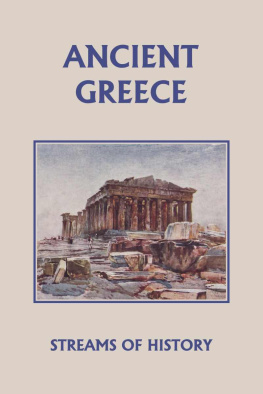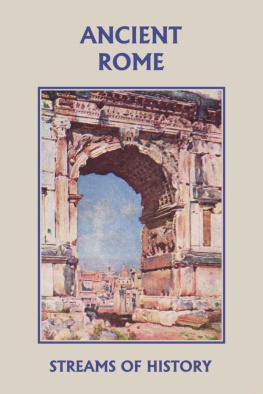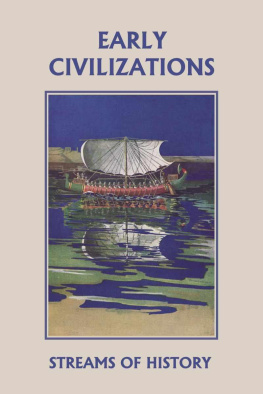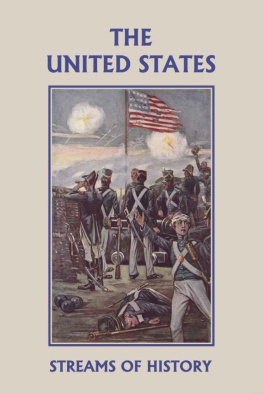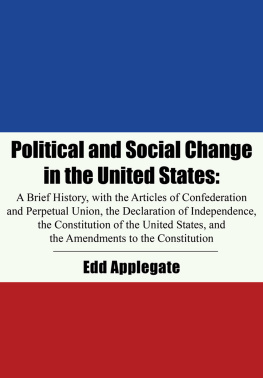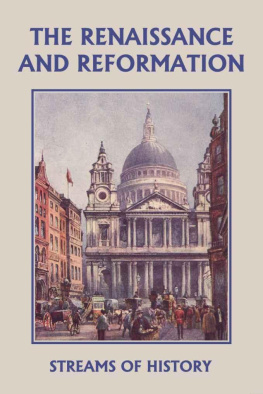Streams of History: The New World
by
Ellwood Wadsworth Kemp
Yesterday's Classics
Chapel Hill, North Carolina
Cover and Arrangement 2010 Yesterday's Classics, LLC
All rights reserved. No part of this book may be reproduced or retransmitted in any form or by any means without the written permission of the publisher.
This edition, first published in 2010 by Yesterday's Classics, an imprint of Yesterday's Classics, LLC, is an unabridged republication of the work originally published by Ginn and Company in 1902. This title is available in a print edition (ISBN 978-1-59915-259-2).
Yesterday's Classics, LLC
PO Box 3418
Chapel Hill, NC 27515
Yesterday's Classics
Yesterday's Classics republishes classic books for children from the golden age of children's literature, the era from 1880 to 1920. Many of our titles are offered in high-quality paperback editions, with text cast in modern easy-to-read type for today's readers. The illustrations from the original volumes are included except in those few cases where the quality of the original images is too low to make their reproduction feasible. Unless specified otherwise, color illustrations in the original volumes are rendered in black and white in our print editions.
Contents
The Ideas Which Spain Developed at Home and Then Planted in America
W HEN Columbus discovered America, in 1492, there were three strong nations on the western coast of Europe-Spain, France and England. As soon as America was discovered, these three nations reached out their hands across the vast spaces of the Western ocean to lay hold of the New World. Throughout all of the sixteenth and seventeenth and the greater part of the eighteenth centuries these powers struggled for mastery of the Atlantic Ocean and the New World beyond. Before three centuries were gone it was clear that the English people and Teutonic ideas were to rule the western land. The reason why Spain and France failed in the struggle, and England so completely succeeded, was because the first two nations sought to plant medieval ideas in America, while the English colonists, led by ideals of the future and not of the past, came to the new shore full of the new ideas which had burst forth in Europe in the Renaissance, the English Parliament, the printing press, the public school and the Reformation. To study this struggle for the New World and see how it terminated is the work before us now.
We will first look at Spain and the life developed there, for the ideas Spain had at home were the ideas she brought to the New World.
Spain is a peninsula in the southwestern part of Europe, which, although lying directly east from the central part of the United States, has a much milder climate. In it grow such products as grapes, oranges, figs, dates, almonds and olives. Outside of a narrow coast-plain surrounding the greater part of the peninsula, its surface is a high plateau, broken by mountains. It was hard to subdue the mountaineers living in these fastnesses, and brave people have lived there for thousands of years.
Spain was conquered about two thousand years ago (133 B.C.) by the Romans, who settled it and ruled it very firmly for many years, working the rich mines of gold and silver which they found there and carrying the riches back to Rome. When Rome began to lose her power, the Germans overran the peninsula, and settled it about 415 years after Christ. They learned much from the Roman people they found there, and adopted many of Rome's ways, especially her way of having one man rule arbitrarily,that is, without consulting the people's wishes, or having them vote upon questions, as we do in America.
About three hundred years after the Germans conquered Spain, that is, about the beginning of the eighth century, the Arab Moors, who were Mohammedans in religion, conquered all of Spain except the mountains in the extreme north. The Moors grew to be very industrious and well educated, and for a time had the best universities in the world. Many people from other European countries came to attend their schools. But the brave Christian people in the little mountain states of northern Spain kept fighting back the Mohammedan Moors, driving them slowly farther and farther south, till all of the northern half of Spain was regained by the Christians. Here several brave little Christian states grew up, from about 900 to 1500 A.D. These states not only fought continually against the Moors, but quarreled much among themselves, just as all the feudal states did during the Middle Ages. Two of the largest states were Aragon and Castile. In 1469 Ferdinand, Prince of Aragon, married Isabella, Princess of Castile, thus joining these two states under one power. Ferdinand and Isabella soon ruled all Spain except a little mountainous fringe in the extreme south, called Grenada, held by the Moors.
Now, fighting constantly for almost eight hundred years made the Spanish very brave, but very cruel as well. Fighting for their religion against the Mohammedan Moors made religion the uppermost thought in their minds. Likewise it helped to make them hold to one church and one religionthe Catholicmore firmly than did any other great nation of their time.
By the last of the fifteenth century the continual snarling and petty warfare between the little Spanish states were largely brought to an end by having the same king and queen rule over all. And, and as I told you, the king and queen themselves decided what they would have done in religion, government, education and the like, and did not ask the people who had helped to fight the battles much about what they would like to have done. This kind of rule is what is called despotic government, and Spain grew, like old Rome, to be more and more despotic the older she became. But now that the Spanish were united they joined against the last of the Moors, and, after ten years of fighting, completely conquered them, in 1492.
We have seen already, in the fourth volume of this series, that during the twelfth and thirteenth centuries the people from all parts of Europe had gone to the Holy Land on crusades. This led to the circulation of great quantities of products between European cities and the lands of the East. It led no less to new ideas and broader views coming to the West, which filled people with a great desire to know more and to be adventurous. The art of printing, invented in the same year that Columbus was born (1446), spread the new knowledge, and soon made it possible for one to possess a library as easily as in the Middle Ages he could have possessed a single book. In fact, as we saw in our earlier studies, Europe in the fourteenth, fifteenth and sixteenth centuries was bursting with new thought, as blossoms burst with the coming of fresh showers and sunshine in the springtime.
Now Genoa, the home of Columbus, being favorably situated on the Mediterranean, had carried on extensive trade with southern and eastern Asia for three hundred years before Columbus's time; but when the Mohammedans captured Constantinople, in 1453 A.D., they stopped the ships of Genoa from traveling eastward, and her trade rapidly declined.
Some of the best-educated people at that time thought that the earth was round, though much smaller than it is; but no one had been brave enough to strike boldly toward the west into the unknown sea to prove whether it was really a sphere or not. But Columbus, full of the free spirit of the time, was bold enough to try it. With three ships furnished by Isabella of Spain, he struck fearlessly out over the vast spaces of the Western ocean to break away the narrow limits of the Middle Ages and carry on trade with Asia across the Atlantic.



